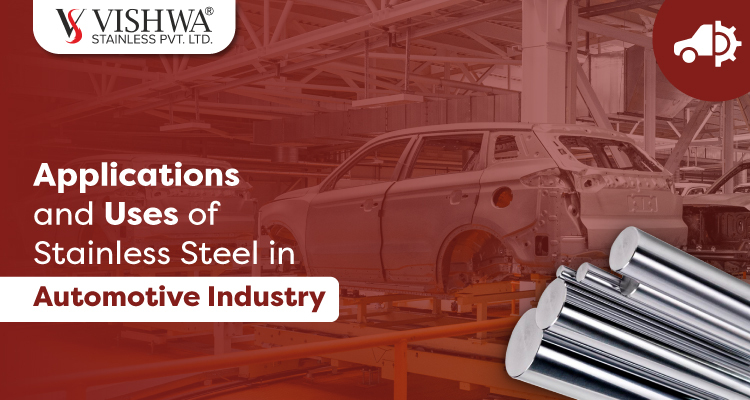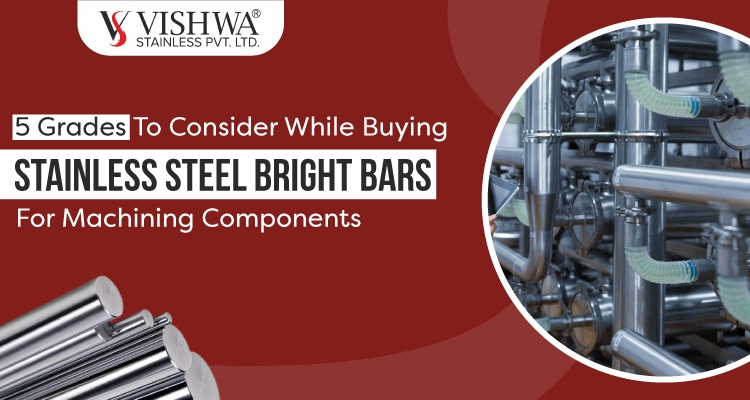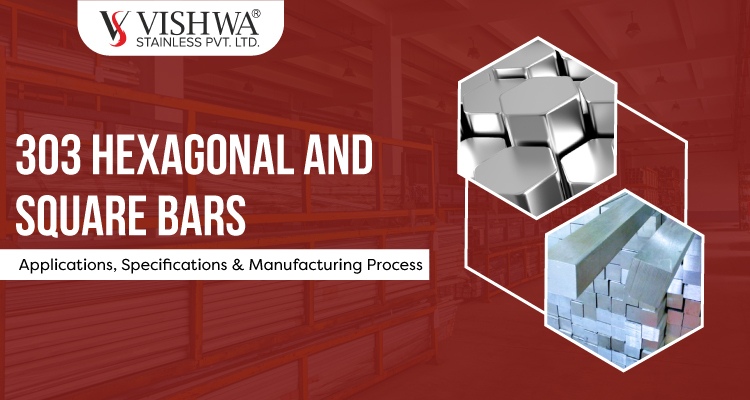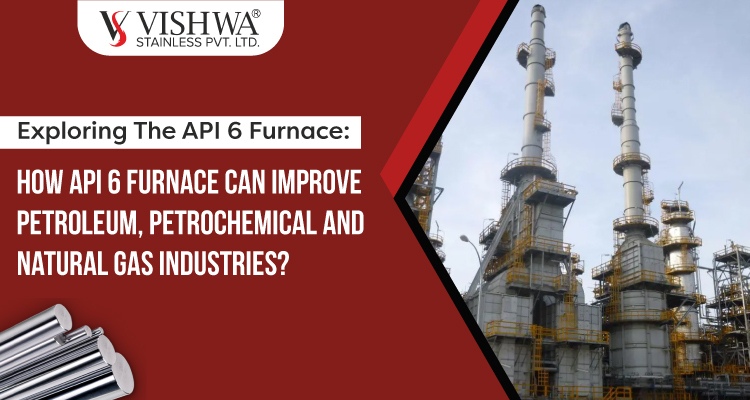Did You Know?
45 to 50% of automotive exhaust systems are made of stainless steel.
Probably, we all are aware of establishing uses of stainless steel in different industries as per their required proportions but at Automotives behind the scenes are quite different, as you read the fact – the ratio of stainless steel is quite higher than other applicants of stainless steel.
So, is it bad/good that Automotives have adopted stainless steel? And if yes, what characteristics of stainless steel made the automotive industry to adapt this higher ratio? Let’s get on to answering step-by-step, when it comes to automotive there are several requirements that need to be fulfilled including a lightweight yet safer experience, environmental-friendly, and affordability.
Now steel can also deliver those segments so why stainless steel and not just steel for automotive, forgot!? “RUST” that can easily eat away the whole engine compartment, can weaken exhaust system mounts, and able to create air leaks.
Whereas stainless steel offers tremendous corrosion resistance, a wide yield strength range, and a lighter weight that apparently reduces vehicles’ weight and benefits in greater fuel efficiency and machinability rephrasing the whole thing into a reduced amount of CO2 emissions.
Thus, after these long checkmarks of benefits, stainless steel offers an environmentally-friendly approach too. Things are turning informative, then why not dig into some more of it? Come let’s do it together.
Role of Stainless Steel Used in Automotive Industry
Since the 1930s, the average count of 15 to 22 kilos of stainless steel gets used in a single car which was mainly found in the exhaust system and sundry small parts.
In today’s date uses of stainless steel in automotive are also extended to other automotive applications such as fasteners, springs, and tubing, as well as brackets, flanges, substructures, and panels.
At younger ages, the cost of wielding was more expensive than now as the years passed by – stainless steel types such as austenitic, martensitic, ferritic, and many other stainless steels were discovered.
From all these stainless steel categories austenitic stainless steel became ideal to use for the automotive industry due to its easy welding and long durability.
{Additional Information on Exhaust Systems: Where we saw the central importance of stainless steel in exhaust systems, we might forget the role of its valves that perform opening and closing operation that controls the gas flow and optimize the engine-back pressure enabling exhaust systems to provide improved performance and auditory control.
These exhaust valves get manufactured from bright bars – in different shapes such as square, round, or hex and with particular grades as per the requirement.}
Uses of Stainless Steel in Automotive Industry
Stainless steel grades – 303, 304, 316, 310, and 321 are sub-categorization of this austenitic stainless. Let’s get on some uses and applications of these austenitic stainless steel grades.
Why Stainless Steel Grade 303 For Automotive Industry?
Due to the presence of sulfur, ss grade 303 is the most machinable austenitic stainless steel among all. It can easily withstand heat temperatures from 760°C to continuous service to 870°C.
However, due to the presence of sulfur, its corrosion resistance and toughness are slighter lower than ss 304. In automotive parts which need more machinability such as nuts/bolts, gears, screws, and shafts ss grade 304 gets in use.
Why Stainless Steel Grade 304 For Automotive Industry?
Stainless Steel Grade 304 is the most versatile used stainless steel in all industries, its chemical composition of 18% chromium and 8% nickel enables it to survive easily in varying atmospheric environments.
In automotive, most requirements from the stainless steel side are of “crashworthiness” [so its metal and functional parts can be recycled and reused] and “reliable safety”. Due to its chemical composition, SS 304 helps to cover both of those segments easily with an additional benefit of a reduction in noise and vibration.
Because of its exceptional formability, even a thin sheet of ss 304 can effectively absorb energy and resist rusting. This 304 stainless steel grade is mostly used in automotive building structures like gaskets, screws, horse fittings, and windscreen parts.
Why Stainless Steel Grade 316 For Automotive Industry?
Where SS 304 stands first, SS 316 is the second most stainless steel grade used in varied industries. Even their physical and mechanical properties contain similar composition whereas the key point which makes SS 316 different from ss 304 is the incorporation of 2 to 3 percent of molybdenum.
These differences enable SS 316 to be more ideal for corrosion resistance, especially against chlorides and other industrial solvents. Application of Stainless Steel Grade 316 in automotive includes exhaust housings for catalytic converters and turbochargers.
Why Stainless Steel Grade 310 For Automotive Industry?
SS Grade 310 is a heat-resistant austenitic stainless steel that is highly composed of chromium and nickel content that offers superior corrosion resistance in oxidized temperatures.
Due to excellent toughness grade 310 Stainless Steel is mostly adopted for cryogenic temperatures such as -450°F, and low magnetic permeability. Shafts and coils are the two applications of ss 310 in automotive.
Why Stainless Steel Grade 321 For Automotive Industry?
Grade 321 stainless steel is particularly denoted as stabilized austenitic stainless steel, with a composition consisting of at least 5 times more titanium addition than carbon components. This higher ratio of titanium helps SS 321 to prevent the sensitization of carbide precipitation during welding.
SS 321 offers unmatchable corrosion and oxidation resistance with the addition of sufficient creep strength, it is mainly operated in high temperatures in automotive parts such as exhaust systems that exhales 900 °C and above.
Applications of Stainless Steel in Automotive Industry
- Fasteners
- Springs
- Tubing
- Brackets
- Flanges
- Substructures
- Panels
- Exhaust system
- Outer covering body
- Hose clamps
- Seatbelt springs
- Catalytic converters
- Turbochargers
Key Note Takeaways
By not missing even one note from the blog, Let’s get on some quick check marks of information we covered throughout the blog. Firstly the point viewed by us was on the high ratio of stainless steel used by the automotive industry, then a long list of reasons and benefits we get from it.
Then the stainless steel roles were and are transformed throughout the years and treasured automotive industry with its austenitic stainless steel and its grades – chemical composition and application in automotive and lastly ended with applications of steel in automotive industry.
“So, is it good/bad that Automotives have adopted stainless steel?” – We think even you may easily answer this now.
For a quick introduction between us, here are some brief you may like to get on, We are Vishwa Stainless Pvt. Ltd. – a manufacturer and supplier of corrosion-resistant, low-maintenance stainless steel bright bars includes hex/round/square shapes, precision SS bright bars, and SS wires that cater according to industries’ requirements not only on domestic but on international markets too with customized specifications and dimensions.




